The document discusses processes and threads. It defines a process as a program in execution with code, data, and stack. Only one process can run on the CPU at a time through context switching. Threads allow a process to have multiple threads of execution sharing the same memory. Scheduling decides which process or thread runs on the CPU. The goals of scheduling are fairness, enforcement of policy, and balance.


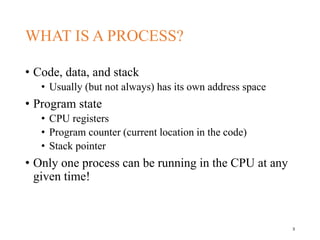
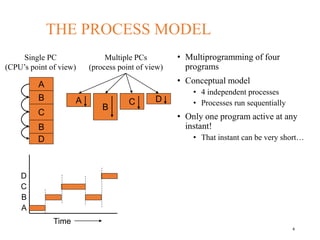
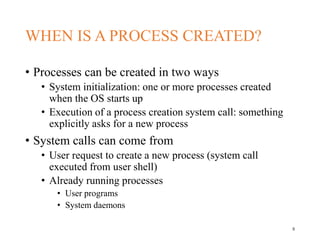

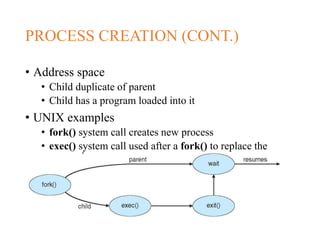
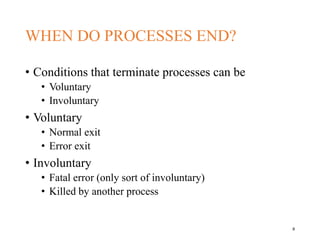

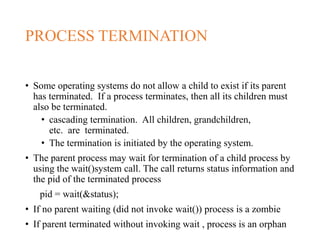
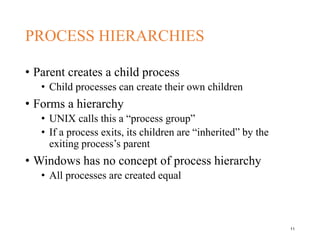
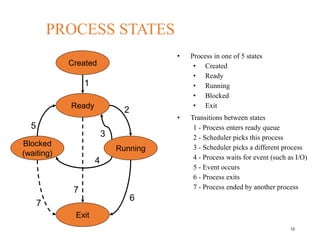
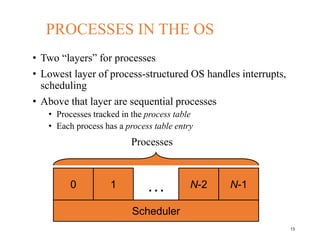

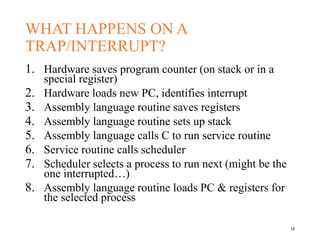
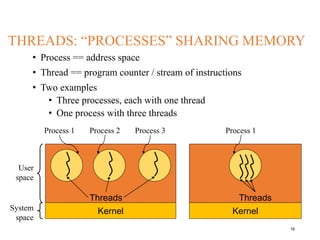
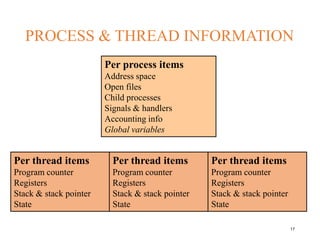

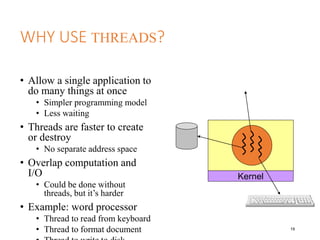
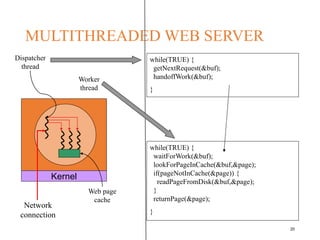
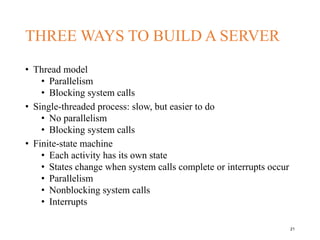
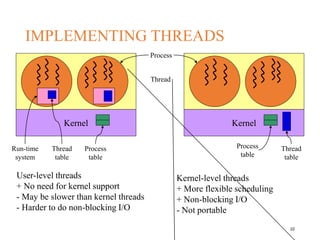

![BOUNDED-BUFFER – SHARED-
MEMORY SOLUTION
• Shared data
• #define BUFFER_SIZE 10
• typedef struct {
• . . .
• } item;
• item buffer[BUFFER_SIZE];
• int in = 0;
• int out = 0;
• Solution is correct, but can only use BUFFER_SIZE-1
elements](https://image.slidesharecdn.com/processesthreads-220825095024-1a70d50f/85/Processes-Threads-pptx-24-320.jpg)
![BOUNDED-BUFFER – PRODUCER
item next_produced;
while (true) {
/* produce an item in next produced */
while (((in + 1) % BUFFER_SIZE) == out)
; /* do nothing */
buffer[in] = next_produced;
in = (in + 1) % BUFFER_SIZE;
}](https://image.slidesharecdn.com/processesthreads-220825095024-1a70d50f/85/Processes-Threads-pptx-25-320.jpg)
![BOUNDED BUFFER – CONSUMER
item next_consumed;
while (true) {
while (in == out)
; /* do nothing */
next_consumed = buffer[out];
out = (out + 1) % BUFFER_SIZE;
/* consume the item in next consumed */
}
26](https://image.slidesharecdn.com/processesthreads-220825095024-1a70d50f/85/Processes-Threads-pptx-26-320.jpg)



